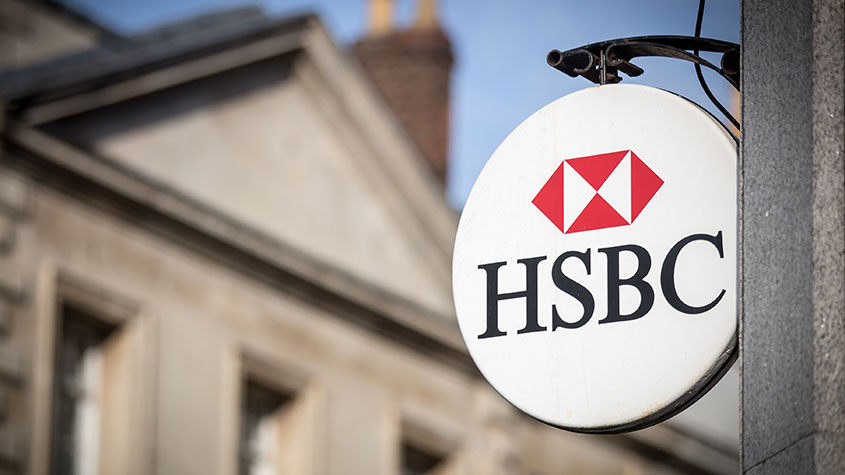Why savers need to act quickly to snap up NS&I’s market-leading 6.2% interest rate
NS&I recently launched a table topping 6.2% one-year fixed savings account, but will it stick around? We explain why you may need to act fast to get it


The NS&I rate mentioned in this article is no longer available. Please see our article on the best fixed savings accounts for similar deals for one year fixed savings offers.
National Savings & Investments (NS&I) made waves in the savings market when it launched a table-topping one-year fixed-rate savings product last month.
The government-backed savings provider - best known for its Premium Bonds product - released new issues of its one-year fixed rate Guaranteed Growth Bonds and Guaranteed Income Bonds with rates of 6.2% AER. This is the highest rate the products have offered since they hit the market in 2008 and also sits at the top of MoneyWeek's best buy table for fixed savings.
MoneyWeek
Subscribe to MoneyWeek today and get your first six magazine issues absolutely FREE

Sign up to Money Morning
Don't miss the latest investment and personal finances news, market analysis, plus money-saving tips with our free twice-daily newsletter
Don't miss the latest investment and personal finances news, market analysis, plus money-saving tips with our free twice-daily newsletter
As interest rates have jumped over the past 12 months, NS&I has tried to keep up, hiking rates on most of its products, including Premium Bonds, Green Bonds, direct savings accounts and fixed savers. But it’s struggled to keep up with other savings providers, which have been far more aggressive in passing higher rates onto consumers.
NS&I’s fixed-rate bonds are now the best offer on the market, but savers shouldn’t sit on their hands if they want to take advantage of these offers.
It’s unlikely they’ll be around for long - we explain why.
Why NS&I may pull the 6.2% rate
To explain why this offer may not be around for long, it is important to understand how the government-backed savings provider works.
Founded 162 years ago, NS&I’s main goal is to raise money for the government.
For the past couple of decades, the government has been spending far more every year than it collects in taxes. It has covered the difference by borrowing money.
The UK government generally borrows money by issuing gilts. These are bonds issued and sold to investors around the world, with the process being managed by an arm of the government called the Debt Management Office (DMO).
At the beginning of every financial year, the Treasury works with the rest of the government departments to try and figure out a financial plan for the year ahead. These calculations allow the Treasury to estimate how much the government will need to borrow. It then works with the DMO to figure out a plan.
This is where NS&I comes into play. The institution is tasked with raising a certain percentage of the overall borrowing total. For the current financial year, its target is set at £7.5bn.
This annual target is only a fraction of the estimated £200bn the government is projecting to borrow in the current financial year. But that doesn’t mean NS&I is a small player. Overall, it manages £215bn (as of March 2023) or around 7% of the government’s outstanding debt.
As NS&I is essentially another arm of the Treasury, savings are backed 100% by the government. Savings are generally only protected up to £85,000 under the Financial Services Compensation Scheme with other savings providers.
NS&I is an important source of funding
NS&I is an important source of funding for the government. Borrowing money from domestic savers gives the Treasury more control, and unlike international investors, domestic savers are less likely to pull their money at the first sign of trouble, which is exactly what happened last year during Liz Truss’s disastrous, short-lived premiership.
NS&I launched its market-beating rate to attract savers. In the increasingly competitive savings market, the institution is struggling to meet its fundraising target for the year. At the last count, it was £400m behind schedule. Therefore, management will be hoping the table-topping offer will help it raise the outstanding amount.
However, NS&I also has a duty to achieve value for money for taxpayers. That suggests it won’t keep paying over the odds to attract money. And NS&I’s offer is well over the odds. At the time of writing, the government can borrow money for a year in the gilt market for 5.1%.
That’s why NS&I’s 6.2% Growth Bond offer is unlikely to be around for long. The savings provider seems to be using the offer as a last-ditch effort to meet its funding targets. When those are met, to achieve the best offer for taxpayers, it’s likely to pull the product.
Get the latest financial news, insights and expert analysis from our award-winning MoneyWeek team, to help you understand what really matters when it comes to your finances.

Rupert is the former deputy digital editor of MoneyWeek. He's an active investor and has always been fascinated by the world of business and investing. His style has been heavily influenced by US investors Warren Buffett and Philip Carret. He is always looking for high-quality growth opportunities trading at a reasonable price, preferring cash generative businesses with strong balance sheets over blue-sky growth stocks.
Rupert has written for many UK and international publications including the Motley Fool, Gurufocus and ValueWalk, aimed at a range of readers; from the first timers to experienced high-net-worth individuals. Rupert has also founded and managed several businesses, including the New York-based hedge fund newsletter, Hidden Value Stocks. He has written over 20 ebooks and appeared as an expert commentator on the BBC World Service.
-
 Why Trustpilot is a stock to watch for e-commerce exposure
Why Trustpilot is a stock to watch for e-commerce exposureTrustpilot has built a defensible position in one of the most critical areas of the internet: the infrastructure of trust, says Jamie Ward
-
 Tetragon Financial: An investment trust with stellar returns
Tetragon Financial: An investment trust with stellar returnsTetragon Financial has performed very well, but it won't appeal to most investors – there are clear reasons for the huge discount, says Rupert Hargreaves
-
 One-year fixed savings drop below 6% - have they reached their peak?
One-year fixed savings drop below 6% - have they reached their peak?The best one-year fixed-rate savings deals have fallen below the 6% mark. Find out if saving rates have reached their peak and the current top rates on the market.
-
 NS&I cuts interest rate on Green Savings Bonds - where can you get a better deal?
NS&I cuts interest rate on Green Savings Bonds - where can you get a better deal?News The state-backed bank has slashed the interest rate on its Green Savings Bonds from 5.7% to 3.95%
-
 November NS&I Premium Bonds winners - check now to see what you won
November NS&I Premium Bonds winners - check now to see what you wonIf you have money saved in NS&I Premium Bonds you can now check to see whether you have won a prize in the November prize draw. Here’s how to check your Premium Bonds.
-
 Is NS&I safe?
Is NS&I safe?National Savings and Investments (NS&I) is popular for its Premium Bonds and savings products. But how safe is it?
-
 October NS&I Premium Bond winners - have you claimed your prize yet?
October NS&I Premium Bond winners - have you claimed your prize yet?October NS&I Premium Bond winners were announced earlier this month - but have you claimed your prize yet? Here’s how to check you have not missed out
-
 Act fast: HSBC to pull its 5.7% one-year bond
Act fast: HSBC to pull its 5.7% one-year bondSavers have until Wednesday to apply for HSBC’s one-year fixed-rate bond. The withdrawal of the account follows NS&I’s decision to pull its market-leading one-year bonds earlier this month. We explain why you need to act fast to secure the best rates.
-
 NS&I withdraws market-leading 6.2% one year fixed bond - what are the alternatives?
NS&I withdraws market-leading 6.2% one year fixed bond - what are the alternatives?National Savings & Investments (NS&I) has now dropped its one year fixed bond paying a table topping 6.2% interest rate a month after launch. Here’s where to find the next best alternative for one year fixed savings
-
 How to beat NS&I's market-leading 6.2% savings bond
How to beat NS&I's market-leading 6.2% savings bondWhile NS&I’s 6.2% savings rate is currently the highest one-year fixed account on the market, we look at how you could beat it with this one deal